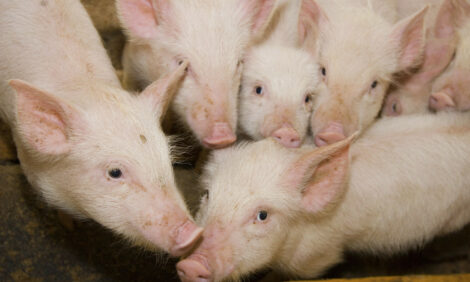



What’s Left If We Lose Antibiotics?
GLOBAL - Bacterial resistance is developing quickly and many critically important drugs risk becoming obsolete. Disastrous consequences lie in wait therefore unless these drugs are used prudently.This was the stark warning of the World Health Organisation (WHO) in April 2014, prescribing that “significant actions” are needed on how we produce, prescribe and use antimicrobial treatment.
In response, microbiologists are striving to come up with new drugs, or develop fresh methods to combat infection.
Many of these alternatives are in developmental stages and are at varying distances from completion.
This article is part of a series, for more on the background to the antimicrobial resistance issue, click here.
Vaccination
Using vaccines prevents, rather than cures, infections with pathogens such as viruses and bacteria, giving an organism immunity to a specific pathogen.
Vaccines stimulate a response from the body by mimicking exposure to a pathogen or a disease which the body then “remembers” in the future.

However, they are limited to an extent by the cost involved in administration across a whole population. Some countries have trouble storing vaccines to appropriate temperatures, with further complications arising when boosters are needed.
Furthermore, diseases which currently have vaccinations are limited in number.
Regardless of setbacks, much of the scientific community regards vaccines as having a major part to play in prudent use of antibiotics in the future . Both animal and human health research groups are involved in an enormous push to develop new and innovative vaccine technologies and platforms.
Vaccine Types
Vaccines are produced through using live, killed or inactivated pathogens , inactivated toxins or segments of a pathogen.
The table shows some key vaccination types in modern science.
| Vaccine Type | How it Works |
|---|---|
|
Live, attenuated
|
Living microbe is merely weakened, limiting disease. Good ‘teacher’ of immune system. Life immunity can be achieved with one/two doses. Often needs cold storage and can have a short shelf life.
Use attenuated forms to mimic how viruses latch on cells, injecting genetic material into them. Scientists take genomes of harmless or attenuated viruses and insert portions of genetic material into them from other microbes which then transfer microbial DNA to the cells – a good immune stimulus. |
|
Inactivated/Killed |
Disease causing microbe is killed with heat, chemicals or radiation so they can’t mutate back to disease-causing state. Most trigger a weaker immune response, possibly requiring boosters. |
|
Toxoid (inactivated toxin) |
Used for bacteria which secrete toxins/chemicals. Toxins can be inactivated with formaldehyde solution. Trains the body to react to a toxin by fighting off a toxoid. |
|
Subunit
|
Relevant antigens are used – not the whole pathogen. This lowers chances of adverse reactions to the vaccine.
Can be the answer when a bacterium consists of a polysaccharide outer shell. This coating dodges immature immune systems by disguising bacterial antigens. These vaccines work round this by having recognisable antigens or toxoids joined to the polysaccharides. |
|
DNA |
A promising field with lots of development. Scientists can make a DNA vaccine against a microbe once its genes have been studied. Design and production is relatively inexpensive. Dispensing with parts of the organism, they provide instructions to cells to make antigen molecules. Cells then secrete antigens, themselves producing the vaccine. |
Probiotics
Beneficial bacteria are given to the host working on a principle of competitive exclusion, first described by Nurmi and Rantala in 1973. This is where non-pathogenic bacteria colonize the intestinal tract, helping to contain the numbers of harmful bacteria.
Scientists are understanding more about the role the large and diverse range of bacteria has in the gastrointestinal tract of species and the effect this microflora has on disease in humans and animals.
In agriculture, probiotics works by feeding bacteria to animals. The term was first used by Lilly and Stillwell (1965) and has been adapted and broadened over time to mean a preparation of microorganisms able to confer health benefits to the host. Single or multiple strains can be used and bacterial species can be combined, with most progress being made in poultry nutrition.
Such species include Bacillus, E.coli, Lactobacillus, Lactococcus, many yeast species and Streptococcus.
Prebiotics meanwhile are non-digestible, introduced into food and help bacteria and beneficial microorganisms flourish. Both have “major implications for non-antibiotics control.”
Positives – Gut health is improved/maintained, Pathogen colonization is prevented, No withdrawal period.
Negatives – Mixed efficacy of single probiotics Complex regulatory approval.
Phage Therapy
*Probiotics
"A preparation of or a product containing viable, defined microorganisms, which alter the microflora in a compartment of the host and by that exert beneficial health effects in the host."
Phages are viruses that invade bacterial cells and disrupt their metabolism, causing them to lyse (killing them). Used in Eastern European and Russian human medicine, phage therapy has treated food borne pathogens in animals and plants.
A feature of phage-therapy includes engineering the bacteria toproduce endolysins and exolysins.
These are enzymes that break down cells by disrupting the protective wall of the bacteria defining its shape – the peptidoglycan wall.
Working on a wide array of targets, endolycins kill cells by working inside them, while exolycins are secreted.
Exolysins are secreted by Eukaryotic cells, one example being lysozyme, an antibacterial found in tears and saliva. They act by disrupting the peptidoglycan wall, a protective barrier for the bacterial cell, defining its shape and work on an array of targets.
Positives – Target specific Phages can be mixed to reduce resistance development. Topical applications are believed to be particularly effective. They can be used alongside antibiotics.
Negatives – Resistance can develop. Troubles in dealing with subspecies of a bacteria, due to specificity.
Bacteriocins
Similar to phages, bacteriocins attack bacteria by focusing on the plasma membrane.
Furthermore, they are believed to have a lower potential for resistance than antibiotics.
Practically all bacteria secrete bacteriocins and inhibit the growth of closely related species, meaning there is potential for wide ranging treatment, many of which could be target specific.
Strengths include hardiness against ultra-violet and heat and, unlike other antimicrobial peptides, they are not toxic to mammalian cells.
Lactic acid bacteria produce a bacteriocin, nisin A, which has been used in food preservation in over 50 countries, such as in dairy foods when fermenting cheese and yoghurt. Scientists say that, despite widespread usage, very little resistance has been reported.
Predatory Bacteria
Considered an unconventional and interesting alternative to antibiotics, predatory bacteria work by hunting bacteria for nutrients and energy.
Most promising are the Bdellovibrio and like organisms or BALO which use enzymes to kill Gram-negative bacteria.
They are noted for the way they attack biofilms – layers of bacteria cells that act as one organism. This is a major positive as biofilm bacteria are much more resilient against antibiotics.
Strengthening Existing Antibiotics
Aside from alternatives to antimicrobial substances, there are many ways to boost an antibiotic dose the efficacy of an antibiotic, including; using other antibiotics in conjunction; inhibiting resistance genes with molecules and using synergistic non-antibiotics.
These are known as adjuvants and one notable development in recent years has been an adjuvant to negate the resistance mechanism that some bacteria have for beta-lactams, a class of antibiotics which includes penicillins.one of the new generations of antibiotics.
Beta-lactamases are enzymes produced by bacteria that are responsible for the resistance.
For example, when administering penicillin-type beta-lactams, amoxicillin accompaniment with clavulanic acid is given. The acid works as an adjuvant by inhibiting the beta-lactamase enzymes.
There are also ways of inhibiting the resistance technique used by some bacteria to pump the drug out of its membrane via mechanisms known as bacterial efflux pumps.
Efflux pump inhibitors have been analysed in animals and humans. One aim is to find one such inhibitor for foodborne pathogen Campylobacter jejuni in chickens.
Similarly, experiments have also demonstrated that phages and bacteriocins can increase the potential of antimicrobials.
In addition, currently available antibiotics should be used responsibly, and this can be achieved by ensuring the right drug is used for the infection by using diagnostic tests, and ensuring that antibiotics are being administered and taken by patients as per the clinician’s recommendations. These measures will help to preserve our current antibiotic portfolio.
A New Dawn?
Some of the toughest bacterial strains could have a new treatment which prevents bacteria from building outer coats, meaning resistance would be hard to achieve for the bacterium, regardless of how many mutations it went through.
Microbiologists at North Eastern University in the US received global coverage of the discovery of Teixobactin. While being harmless to mammalian cells, it attacks gram-positive pathogens such as Staphylococcus mrsa, Enterococci and Mycobacterium tuberculosis.
Furthermore, the method of discovery, by creating ideal bacterial environments through a miniature device called iChip, is also notable. IChip can isolate and facilitate the growth of single cells in their natural environment, potentially allowing scientists to study more microbes.
This could potentially be a route to more drug discoveries. Growing uncultured bacteria allows scientists chance to analyse more untapped microbes, which could be of great use in light of the health crisis.








